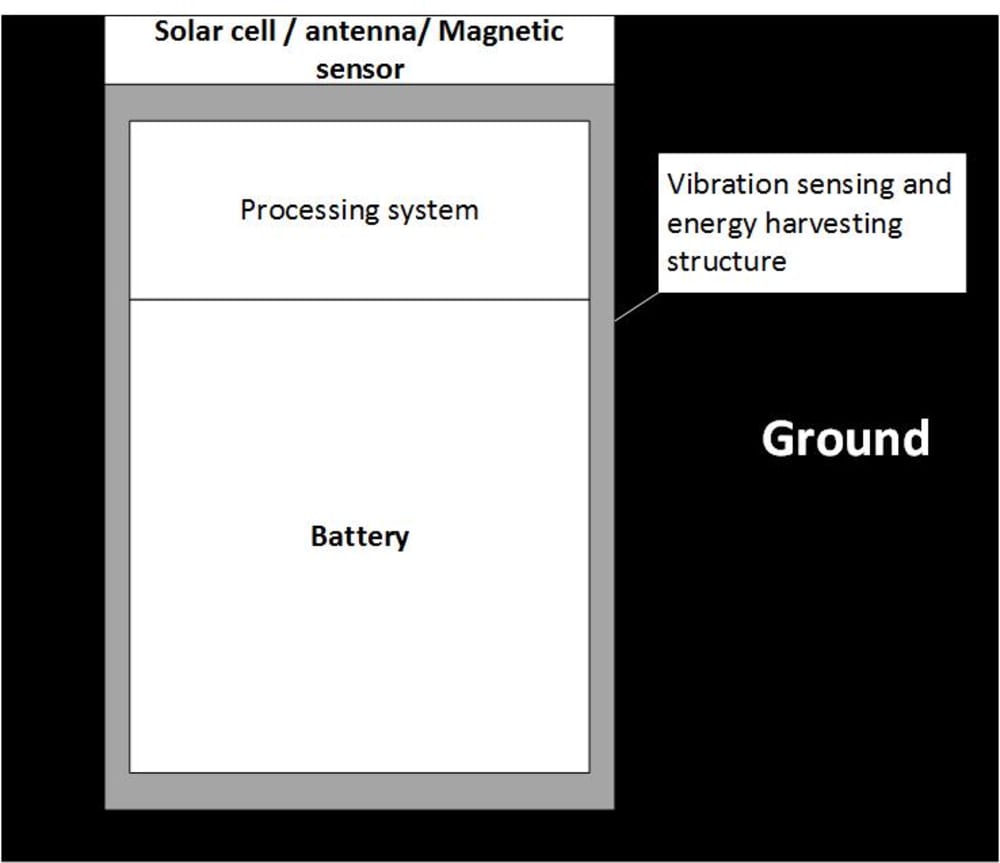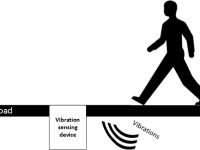This product will be a traffic and pedestrian sensor based on vibration patterns that will create a mesh network between them to distinguish the direction of the detected elements in movement.
Those sensors will provide real time data about pedestrian and vehicle traffic flows through the city this way the city resources can be adapted in real time. For example the data extracted from the sensors will give some insights about which streets will need extra maintenance due to more vehicle or pedestrian flow or which will need more policemen presence, where the traffic is dense, where the public lights can be lowered, where are free parking spots, also adapt the traffic flow or redistribute it through smart traffic lights management, detect where a car crash happened or when a pedestrian is about to cross and inform the nearby cars (like a V2V communication) to prevent possible outrages and accidents… The extracted data represents activity around the city and this data could be used to improve the resource usage and logistics of the city.
The main features of this device are the capability of detecting vibration patterns, construct an intelligent mesh network to exchange data through those sensors to increase the precision of the data, and also those sensors will harvest energy from the environment (vibration, heat, light…) so those devices will be “plug and play”.
It is composed by a magnetic sensor, a vibration sensing enclosure that will also harvest energy (complemented with a solar cell, a thermal energy harvester…), both with a micro controller to process the data, and a radio system to create the network mesh (wifi is a good option to connect with other devices and some of those points directly to the internet and Sigfox for example), and a battery. The electronics will be enclosed on a metallic structure that could be embedded or installed easily on concrete or sidewalks.
Also this device can be used to control the payment on parking spots (controlling the presence of a vehicle and the time), increasing the range of the mesh while providing a secondary communications network (this network mesh could be used to communicate with other sensors/devices)…
Actually there are computer vision systems that use normal or thermal cameras to control the pedestrians and vehicles, but those systems are very expensive and don’t give all the interesting data it could, also there are movement systems that detects the pedestrians enabling low consumption modes of the street lights, some GPS tracking systems to control the city vehicle fleet, or wireless signal detectors that can detect smartphones (normally this goes associated to a person).
This device will be interesting for cities with a minimum number of habitants where the efficiency of its services can be improved through the data provided by those devices that could be capable of controlling other city elements.
Like this entry?
-
About the Entrant
- Name:Daniel Vea Falguera
- Type of entry:teamTeam members:Carles Serra, Carles Oller
- Patent status:none





